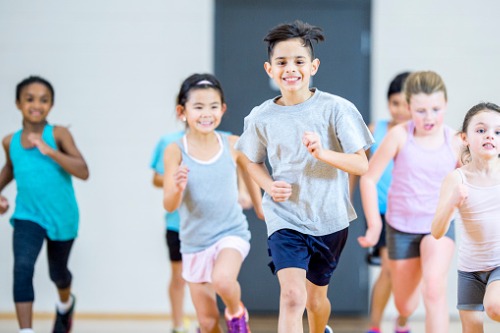
Sporty students rejoice – you’re likely to be outperforming your sedentary peers in the classroom.
A new study has found that students who do physical exercises during class perform better in tests compared to peers who stick to sedentary learning.
The new meta-analysis of 42 studies from around the world was conducted by University College London and University of Sydney and published in British Journal of Sports Medicine.
The approach of incorporating physical activity in academic lessons has been adopted by schools seeking to increase activity levels among students without reducing academic teaching time.
Typical activities include using movement to signify whether a fact is true or false, or jumping on the spot a certain number of times to answer a maths question.
The study concluded physical activity during the lesson had a large, significant effect on educational outcomes, assessed through tests or by observing pupils’ attention to a given task. It had a smaller effect on overall educational outcomes and increased students’ overall levels of physical activity.
Lead author Dr Emma Norris from UCL Centre for Behaviour Change and UCL Psychology & Language Sciences said: “the biggest contributor of sedentary time in children’s lives is the seven or eight hours a day they spend in classrooms”.
“Our study shows that physically active lessons are a useful addition to the curriculum,” Dr Norris said.
“They can create a memorable learning experience, helping children to learn more effectively.”
Senior author Professor Emmanuel Stamatakis from the University of Sydney’s Charles Perkins Centre believes teachers could introduce simple physical activities into their lessons to see improvements in overall activity and educational outcomes.
“Not all lessons need to be sedentary. Simple changes to classroom routines, like standing up to answer a question or running up to the board to write down an answer, could add up to overall schooltime physical activity and lead to improved academic performance,” Professor Stamatakis said.
Researchers looked at data from 12,663 students aged between three and 14, with most studies conducted in preschool or elementary schools. Nearly half of the studies took place in the United States, with seven conducted in Australia, five in the UK, four in the Netherlands and one in China, Croatia, Ireland, Israel, Portugal and Sweden.
In one of the 42 studies analysed, eight-and nine-year-olds simulated travelling the world by running on the spot in between answering questions relating to different countries.
The research team, also led by Dr Norris, concluded the children were more active and more focused on the task than peers in a control group, following teachers’ instructions more closely.*
In another study in the Netherlands, primary school children who took part in physically active lessons three times a week over two years made significantly better progress in spelling and mathematics than their peers – equating to four months of extra learning gains.**
* ‘Physically Active Lessons Improve Lesson Activity and On-Task Behavior: A Cluster-Randomized Controlled Trial of the “Virtual Traveller” Intervention’, published in Health Education and Behaviour.
** ‘Physically Active Math and Language Lessons Improve Academic Achievement: A Cluster Randomized Controlled Trial’, published in Pediatrics


